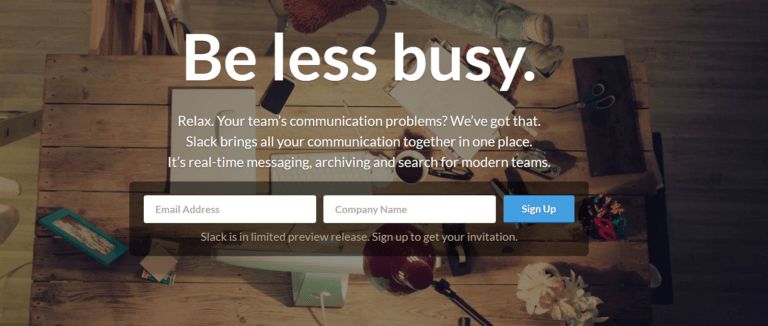In October 2023, Google rolled out a core update, and even well-optimised websites stopped ranking.
Overnight, HubSpot and Zapier’s blog traffic dropped double digits according to Sistrix visibility data. Niche sites with fewer backlinks but stronger media footprint (e.g. being mentioned in TechCrunch or Business Insider) held their ground.
What’s going on?
Google is rewarding real-world authority, not just optimised content.
It’s not just about backlinks anymore. It’s about who’s talking about you. Are you quoted in industry publications? Are journalists citing your content? Are your founders being interviewed in trusted outlets?
This isn’t speculation. Google’s documentation confirms with the December 2022 update to E-E-A-T (adding “Experience”) that it wants content from people who’ve done the thing, not just written about it. According to Google:
“Does the content provide original information, reporting, research, or analysis? Is the content written by an expert or enthusiast who demonstrably knows the topic well?”
This is a digital PR problem, not just an SEO one.
In this article, I’ll show you:
- Why traditional SEO content is now algorithmically irrelevant
- What kind of content + PR strategy Google rewards
- How to future-proof your brand’s visibility by creating algorithm-smart PR content
If your traffic has been dropping and you can’t figure out why, this is likely the reason.
Most SEO content is playing a game that Google no longer respects
Scroll through the average B2B blog and you’ll find keyword-optimised posts, templated intros and surface-level advice. They’re designed to rank, not to resonate. And increasingly, they don’t do either.
In 2024, Google’s algorithm now weighs reputation signals, not just keyword use. As Google’s Search Central documentation says:
“Does your content demonstrate first-hand expertise and a depth of knowledge?”
And here’s the truth: Google checks this through off-page signals. According to Glenn Gabe’s analysis of the March 2024 core update, sites without external validation (such as press mentions, expert citations, or author credibility) lost visibility, even if their content was technically sound.
So what’s missing from the old SEO playbook?
- No External Proof: If no one mentions your brand, cites your data or references your work, Google sees your content in a vacuum. And a vacuum isn’t an authority.
- Overused Roundups: Posts filled with cold outreach quotes from random marketers don’t count. As John Mueller said, “Authority is not about stuffing bios with expertise. It’s about recognition from others.”
- Zero Industry Visibility: If your authors don’t appear on podcasts, in interviews or at events, and if no journalist has ever quoted your commentary, then Google assumes your “expert” is just… a writer.
So what does algorithm-smart PR material look like?
- Authority Sites Backlinked: For instance, if the Content Marketing Institute mentions a brand’s framework in a trend report.
- Quoted in trade publications, Such as a head of marketing from Clearbit being quoted in Adweek’s SaaS growth feature.
- Thought Leadership: When leaders of a company are positioned as experts in TechCrunch, MarketingProfs, or a speaker roster at MozCon.
These show up in:
- Verified author bios (via Schema)
- Mentions in Google’s Knowledge Graph.
- Newsletter mentions and citations, as well as media that is earned, are examples of third-party amplification.
As the difference widens between conventional SEO and what Google values, content teams are left with two options: either continue to exhaust keywords or begin to construct reputation assets that Google would find hard to overlook.
Why Most Digital PR Doesn’t Improve Your Rankings and What Does
Digital PR is a buzzword in SEO, but most of it fails where it matters: visibility.
Teams get press mentions. Agencies get backlinks. But rankings? Often flat or declining. That’s because most digital PR strategies are misaligned with how Google measures authority.
This isn’t about brand exposure anymore. It’s about structured, verifiable credibility, from the right sources, in the right context, on the right topics.
Let’s break down what that means and what to change.
You Don’t Need More Mentions, You Need Better Ones
Most PR campaigns still chase volume:
- Press releases on irrelevant aggregators
- One-off mentions in general business blogs
- Cold-pitch listicles with weak domain authority
The assumption is that more mentions = higher authority = better rankings. But that’s not how Google works.
According to Google’s own Search Quality Evaluator Guidelines (Section 2.6.4), authority is evaluated through:
“Independent, credible sources… topically relevant and demonstrating expertise.”
Mentions outside your content’s topic cluster — even from high-DA sites — don’t signal subject expertise. They might dilute it.
In the March 2024 core update, multiple content-rich B2B brands with PR-heavy strategies lost visibility. Sistrix’s visibility index shows that sites with a surge in generic press releases or mass guest posts lost between 15–30% of their keyword footprint, despite an increase in backlink count.
What Google Rewards
Let’s contrast that with what’s working now:
- Mentions on Niche Authority Sites
Being mentioned in Search Engine Journal, Built In, or Content Marketing Institute means way more than 20 backlinks from generic finance or business blogs.
Google looks at where links come from and how often sites are mentioned together to figure out what a site is about. Ahrefs and Majestic have tools that show that the kind of sites linking to you is more important than just the sheer number of links.
- Keep Showing Up in the Same Areas
Credibility builds up over time. If your name pops up in a bunch of well-known publications in the same field, Google begins to link you to that subject.
Like, you’ll see Clearbit all over places like SaaStr, First Round Review, and TechCrunch, which are big on SaaS. Being there a lot probably makes their data-driven marketing stuff seem legit to search engines.
- Great Content That People Want to Share
Google keeps tabs on what people cite. Stuff like Backlinko’s Skyscraper Technique or ProfitWell’s pricing info gets referenced by tons of marketers, SEO folks, and reporters, which just keeps boosting their authority.
SparkToro’s 2023 research shows that if your content gets mentioned in industry publications, it tends to do better in terms of organic and referral traffic.
How to Build PR That Google Trusts
Okay, here’s how to get your PR noticed and make your brand a go-to source:
Steps to follow:
- Figure Out Your Main Topics: What 3-5 main things should people trust your brand on?
- See Where the Experts Are: Check out Ahrefs, SimilarWeb, or SparkToro to find out where your biggest rivals are getting mentioned.
- Make Connections That Last: Don’t just send out one-time pitches. Become a reliable source. HARO or Quoted can be useful if you persist.
- Make Content People Will Want to Share: Publish original research, unique guides, or detailed industry explanations. Make them good enough that others want to link to them.
Next Step
If your site isn’t being mentioned in the right places, your rankings will drop, regardless of how much effort you put into your content.
Whether you run an agency, a traditional company, or you are just looking to grow your brand, Detutu Media can help you become a trusted source and an authority in your industry.
Where do we go from here? Click here to get in touch with us.




